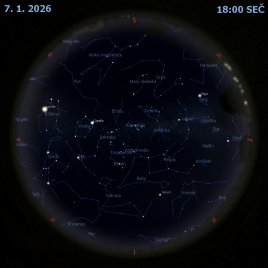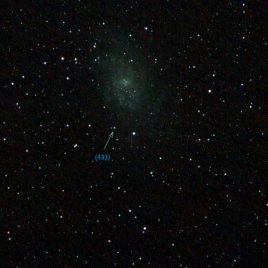Simulace TNG50: Vznik kupy galaxií
Uznání videa:
IllustrisTNG Project;
Visualization:
Dylan Nelson
(Max Planck Institute for Astrophysics)
et al.
Music:
Symphony No. 5
(Ludwig van Beethoven),
via
YouTube Audio Library
Jak vznikají kupy galaxií? Náš vesmír vyvíjí příliš pomalu, než abychom to mohli vidět, ale můžeme se podívat na rychlejší počítačové simulace. Nejnovějším počinem je TNG50 z projektu IllustrisTNG, což je vylepšení slavné simulace Illustris. První část videa sleduje plyn ve vesmíru (většinou vodík) při jeho vývoji do galaxií a kup galaxií od raného vesmíru až po dnešek, přičemž jasnější barvy znamenají rychleji se pohybující plyn. Jak vesmír dospívá, tak plyn padá do gravitačních jam, vznikají galaxie a ty se začínají otáčet, srážejí se a splývají a mezitím v jejich centrech vznikají černé díry a okolní plyn je vyvrhován vysokými rychlostmi. Druhá část videa se soustřeďuje na sledování hvězd a ukazuje dokončující se kupu galaxií včetně slapových ohonů a hvězdných proudů. Výtoky z černých děr jsou v TNG50 překvapivě složité a podrobnosti jsou srovnávány s naším skutečným vesmírem. Studium toho, jak se v raném vesmíru srážel plyn pomáhá lidstvu lépe pochopit, jak kdysi vznikala naše Země, Slunce a Sluneční soustava.
Seznam odkazů v popisu
- TNG-project.org: The IllustrisTNG project is a suite of state-of-the-art cosmological galaxy formation simulations.
- TNG-project.org: The IllustrisTNG Project
- Illustris-Project.org: The Illustris Simulation
- TNG-project.org: Media Images, videos, and other visualizations.
- LANL.gov: Hydrogen
- APOD: 2018-10-09 NGC 1672: Spirální galaxie s příčkou z Hubbla
- Wikipedia: Galaxy_cluster
- Wikipedia: Gravity_well
- APOD: 1999-10-17 Černé díry ve středech galaxií
- TNG-project.org: Media Images, videos, and other visualizations.
- APOD: 2010-09-26 Arp 188 a slapový ocas Pulce
- APOD: 2014-01-17 Hvězdné proudy v M83
- arXiv.org: First Results from the TNG50 Simulation: The evolution of stellar and gaseous disks across cosmic time
- ShutterStock.com: Foto: funny-british-kitten-looks-surprise :-)
- APOD: 2021-08-02 Hubblovo ultrahluboké pole ve světle a zvuku
- Harvard.edu: First results from the TNG50 simulation: galactic outflows driven by supernovae and black hole feedback
- NASA: Early Universe - Webb/NASA
- NASA: Earth
- NASA: Sun
- OpenSpaceProject.com: Our Solar System - videos
NASA Official: Phillip Newman Specific rights apply. NASA Web Privacy Policy and Important Notices
A service of: ASD at NASA / GSFC & Michigan Tech. U.
Odkaz na originální APOD


